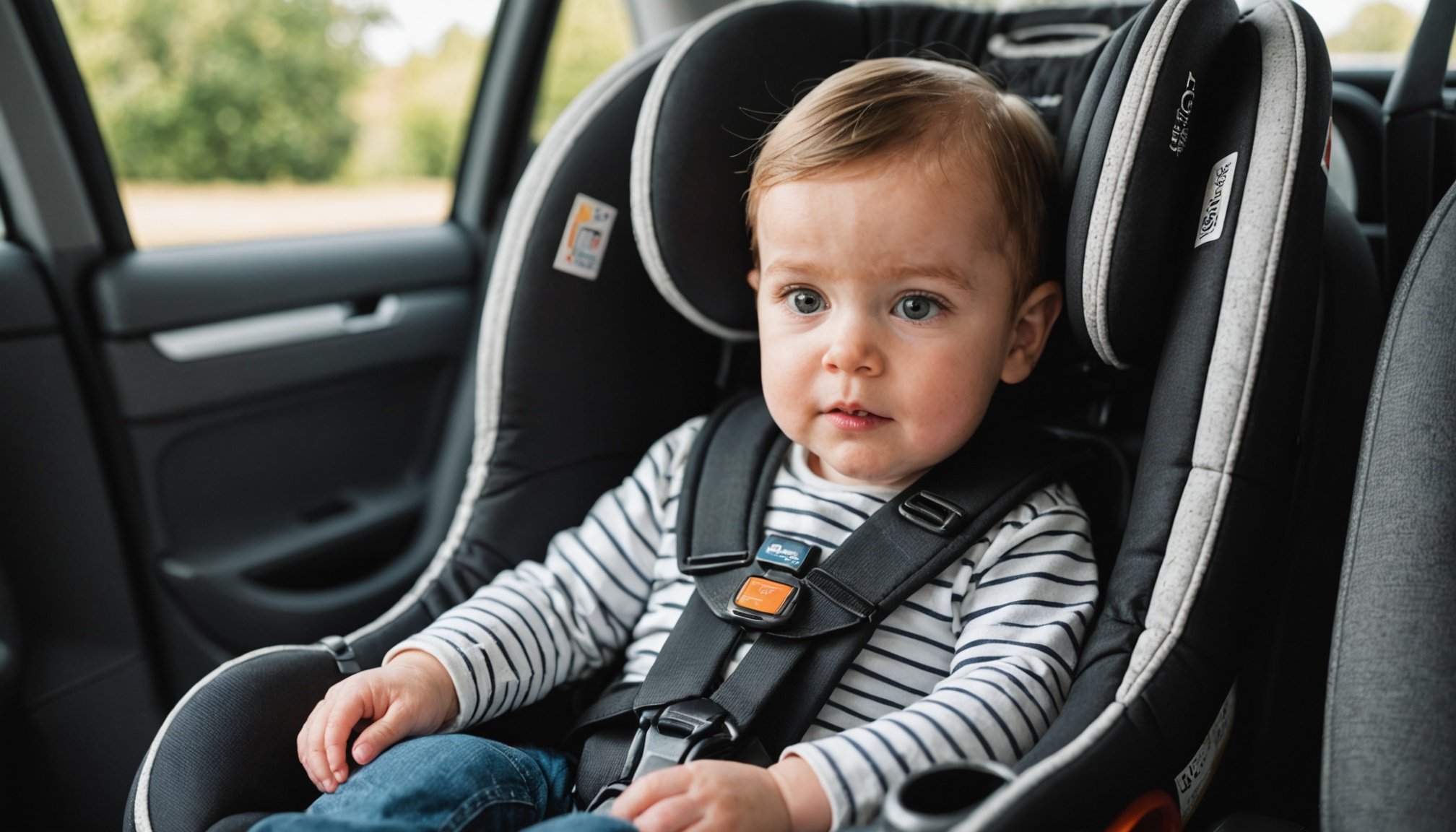Essential Updates on UK Car Seat Regulations for Families
Stay informed about the latest UK car seat law to ensure your child’s safety and compliance with legal requirements. The UK car seat regulations have evolved, emphasizing the importance of adhering to specific age, height, and weight limits.
According to current UK car seat regulations, children must use an appropriate car seat until they are 12 years old or 135cm tall, whichever comes first. The law specifies that different types of seats—rear-facing, forward-facing, or booster seats—must be selected based on precise weight and height criteria. For example, infants under 15 months are required to travel rear-facing, which enhances baby travel safety significantly.
Additional reading : Comprehensive legal guide for installing car lifts in uk garages: key insights uncovered
Non-compliance with these legal requirements can lead to fines up to £500 and penalty points on your driving license. Police may also refuse to allow you to continue driving if your child’s car seat does not meet the standards. Ensuring you meet the latest UK car seat law protects not only your child but also your legal standing on the road.
By keeping up-to-date with these regulations, you safeguard your family while avoiding costly penalties associated with non-compliance under the UK car seat regulations framework.
Also read : Crucial legal tips for navigating your custom electric classic car on uk roads
Age, Height, and Weight Guidelines for Safe Car Seat Use
Safe car seat use depends primarily on age requirements, height requirements, and weight requirements to ensure proper protection. Infants typically start in rear-facing seats, which should be used until at least age 2, or until the child reaches the maximum weight or height limit specified by the seat manufacturer. These limits vary, but generally, a child must remain rear-facing until they weigh about 40 pounds or grow taller than 40 inches.
Once a child exceeds those rear-facing limits, they transition to a forward-facing seat equipped with a harness. This stage often lasts until age 5 or when the child reaches the forward-facing seat’s height or weight limits—commonly up to 65 pounds and around 49 inches in height. Parents should carefully review these weight requirements and height requirements on the specific seat label.
When a child outgrows the forward-facing seat but is too small for an adult seat belt alone, they move to a booster seat, which is usually appropriate through ages 5 to 12. Booster seats adjust the seat belt to fit safely by height, accommodating children up to 57 inches tall.
Knowing and following these child seat eligibility guidelines can prevent improper use and significantly reduce injury risk.
Step-by-Step Car Seat Installation and Safety Tips
Installing a car seat correctly is vital for keeping baby safe in car journeys. Start by choosing a seat that fits your child’s age and size, then place it in the back seat, preferably the middle spot, which is safest. Use either the vehicle’s LATCH system or the seat belt to secure the car seat; never use both simultaneously unless the manufacturer permits it.
Common mistakes include not tightening the harness enough, installing the seat at the wrong angle, or using expired seats. Always ensure the car seat doesn’t move more than an inch side-to-side or front-to-back after securing it. For safe installation tips, check that the chest clip is at armpit level and the harness straps lie flat without twists.
Before every trip, perform a safety checklist: confirm the seat is locked in place, the harness fits snugly, and your child’s head and neck are supported. Regularly inspect the car seat for wear and adhere to expiration dates. These practices not only prevent injury but deliver peace of mind during every drive. Proper car seat installation ensures your little one travels securely and comfortably.
Recommended Car Seat Products for 2024
Choosing from the top baby car seats UK can feel overwhelming, but focusing on key features simplifies the process. Prioritize seats with robust side-impact protection, adjustable harness systems, and easy installation to ensure both safety and convenience. These elements consistently appear in trusted car seat recommendations, reflecting the latest safety innovations and user feedback.
Brands like Maxi-Cosi, Britax, and Cybex dominate car seat reviews due to their compliance with UK safety standards and practical features such as removable covers and compatibility with strollers. Each offers a range from infant-specific seats to models suitable for toddlers and older children, providing flexibility as your child grows.
When balancing safety and affordability, consider budget-friendly options that still meet or exceed legal safety requirements. While premium models often include added comfort and technological enhancements, many mid-range seats offer excellent protection without a high price tag. Reviewing the safest car seats in both categories helps parents make informed decisions tailored to their needs and budget. Exploring these categories ensures you select a car seat that is both reliable and cost-effective for 2024.
Real-Life Scenarios: Families Navigating UK Car Seat Laws
Real-world family car journeys in the UK reflect how parents apply UK car seat law in practical settings. Many parents share how initial confusion gives way to confident use of age-appropriate seats after firsthand experience. For example, navigating trips with children of varying ages requires switching between rear-facing infant seats, booster seats, and adult seat belts as kids grow. This staging ensures compliance with safety standards and legal requirements without compromising convenience.
Parents often emphasize the importance of clear practical car seat advice before setting off. Missteps, such as using an ill-fitting seat or forgetting to adjust harnesses, became learning moments that led to improved safety habits. Some describe the extra challenge of managing multiple children, explaining how organizing seating arrangements and securing each seat properly becomes a team effort.
Involving grandparents or secondary caregivers adds another layer. Families explain that sharing updated knowledge of UK law in action helps avoid misunderstandings, such as assuming a toddler can use a seat belt early. Consistent reminders and demonstrations reinforce correct installation techniques. These insights help families create safer travel environments while fostering shared responsibility among all caregivers.
How Robot Hoovers Navigate and Clean Your Home Effectively
A robot hoover’s ability to navigate and clean efficiently relies on a mix of technologies designed to map your home accurately. Most models use sensors such as laser, infrared, or cameras to detect walls, furniture, and obstacles. This sensing allows the robot to form a virtual map, which guides its cleaning paths.
When asked, “How does a robot hoover avoid missing spots?” the answer lies in its navigation system. High-end models methodically cover areas by following systematic patterns rather than random movements. They remember where they have cleaned by updating their maps in real time.
Some robot hoovers also feature multi-surface detection, adapting suction power and brush movements based on carpet or hard floor. This adaptability improves cleaning precision and efficiency.
For example, if a robot detects a heavily soiled carpet section, it may pass over it multiple times. In contrast, it reduces power on bare floors to conserve battery life. Ultimately, the combination of intelligent navigation and surface awareness makes these devices practical solutions for maintaining clean floors daily, no matter the layout complexity.



